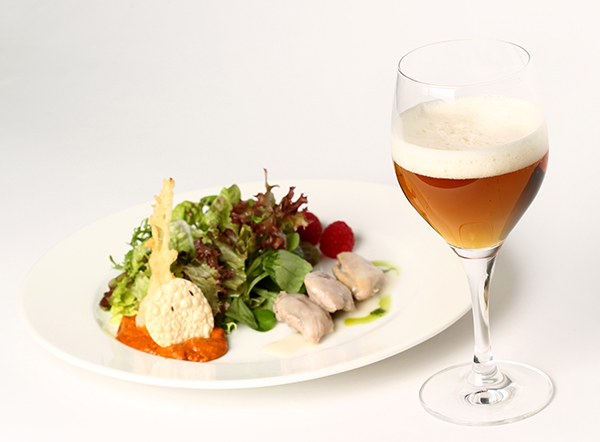José Luis Olmedo, Innovation Projects Manager at HR Incorp, tells us about the many ways to harmonise dishes with beer, a growing combination in our culinary practices.
When dining at a restaurant, no-one is surprised when advised about which wine to accompany the chosen meal with. However, 24 years ago, when Karl Schiffer inaugurated his beer-house Schiffer in Austria, it was a rarity as it offered food and beer pairings. His clients were surprised as for each dish there was a recommended beer.
At that time, brewers were not at all interested in pairings, but a few years ago it was recognised as an opportunity to attract new consumers that had previously drunk wine at mealtimes.
The way paved by Schiffer was followed by the high-profile New York brew master from the Brooklyn Brewery, Garrett Oliver, who wrote “The Brewmaster’s Table” in 2015 where he opened readers’ eyes to the “the pleasures of real beer with real food”.
From then on, and especially in the USA, “Beer Sommeliers” began to become popular. They were in charge of setting the rules on how to pair food and beer and it was then that beer began to become a real alternative to accompany meals.
The credibility of these experts has increased with the appearance of official “Beer Sommelier” training courses, especially because the objective is not to dethrone wine from its rightful place at the table, but assuming that the main dish will be accompanied by wine, focus on the range of opportunities for beer with starters, cheeses, and desserts, times at which beer can be a new and fun experience.
Another example is the Noma restaurant in Copenhagen, acknowledged as one of the best in the world in gastronomic circles, that has promoted drinking beer at mealtimes in Scandinavia in the last 5 years, although it has been slightly easier as there is no local wine in the area.
Beer has been associated to a male environment, after work drinks and parties, but the association with food is a new opportunity to try beers that have a lot of potential, allowing a larger number of consumers to discover this beverage.
However, there are many variables that must be taken into account when pairing, such as the climate. In warm climates, consumers prefer light beers to quench their thirst to other generally darker and more complex beers.
Types of food
The type of food also influences the choice of drink and, although it may not seem so, there are times when beer holds an advantage over wine, as is the case with spicy and hot foods, as it is a more refreshing drink.
Given that it is a drink made with a number of ingredients, as opposed to wine which is made with only one, beer has the advantage of a range of possibilities in terms of flavours and aromas to combine with different dishes.
In pairing, there is also harmony with responsible consumption of beer, as its consumption is valued more for the quality of the beer rather than the quantity consumed.
Craft beers have become increasingly popular and they bring with them a very clear idea about pairing as a fundamental tool to making them known and, generally, craft beer making facilities have a restaurant where beers are paired with local gastronomy. The resurgence of traditional styles and an increase of craft beers is placing the versatility of beer to accompany food in the spotlight.
Searching for the balance
All beverage and food pairing should be more an art as opposed to a set of rules to be followed. In practice, the search is not for a strong beer to overshadow a delicate dish, nor for a light beer to disappear when accompanying a flavourful dish. The objective is balance. The intensity of a beer is based on a number of factors that the consumer will taste as a whole: sweetness, the flavour of cereal, bitterness, a toasted flavour, alcohol content, level of carbonisation, and at times acidity. Although it may seem like a lot of information to process, each person does it instinctively, almost without realising and, if there is balance, a sense of harmony will be perceived. Likewise, if there is no balance, the sensation will be that of a melody out of tune.
However, perhaps because we are looking for a good contrast between flavours, or because we are aiming for a balance of aromas and flavours between, for example, a strong dish and a mild drink, it’s true that many dishes can become a treat for the senses when paired with different types of beer.



